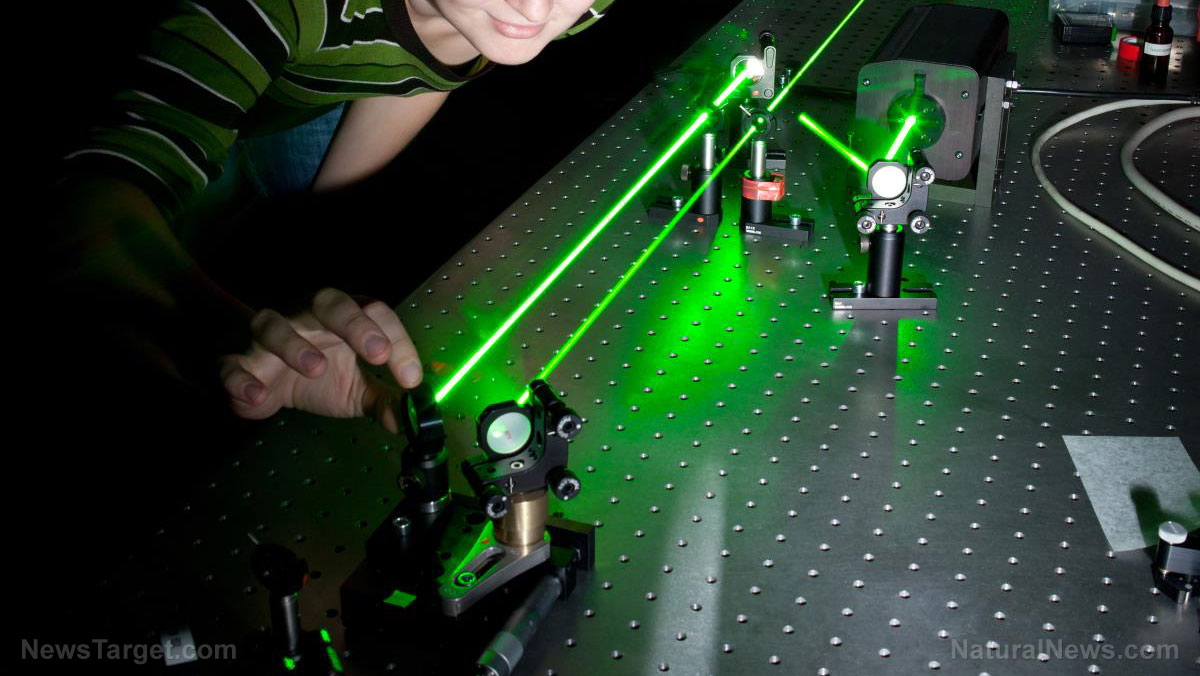
Over in the U.S., the Federal Aviation Administration (FAA) calls exposure to lasers during the flight as "especially debilitating" when the pilot is hit at night. The sudden exposure to bright light in a low-light setting such as a cockpit is described as "being punched in the eye" and can be a serious threat that can compromise the safety of both the flight crew and passengers in that flight.
Unfortunately, pilots are not the only ones affected by these attacks, with lasers being ubiquitous in nearly every line of work. From medicine to industry, as well as for private and commercial use, the various practical applications of lasers meant that it could be readily available for everyone. (Related: Laser acupuncture effective against headaches in children.)
And that's where laser pointers come in. It's been heavily utilized in various forms: Teachers use them to direct students to specific information on the slide; engineers use them to level and align structures. Unfortunately, people also misuse them for toys or novelty items. Moreover, these pointers are found everywhere – from regulated manufacturers, which follow proper standards, to unregulated places such as the internet, where lasers can be easily purchased.
While some people consider lasers as objects for play, these cause serious harm especially when these are pointed at the eyes, according to researchers from the University of Bonn and the University of Oxford. The study, titled Retinal Injury Following Laser Pointer Exposure, was published in the online journal Deutsches Ärzteblatt International.
Researchers pointed out in the study that laser pointers can cause photothermic harm to the eyes, based on the "wavelength of the radiation output, exposure time, localization, and spot size." While the eyelids have a "blink reflex," that is, a natural reaction of eyelids to close and look away only offer some degree of protection against these types of injuries, they cautioned.
For the study, the team collated scientific literature related to injuries involving laser pointers. They also tested store-bought lasers from different internet-based shops (including one street market), measuring their optical radiation power, and comparing it with the provided label and existing regulation. Finally, they studied actual laser pointer-related injuries from St. Franziskus Hospital in Germany to determine whether there is a significant change in the morphology of the eye following the injury.
Researchers found out that the risk of injury is higher for short-wave light (green laser pointers which emit a wavelength of 490 to 575 nanometers) than for long-wave light (red laser pointers which have a wavelength of 630 to 750 nanometers). They have also gathered that an exposure time of 10 seconds or less at five milliwatts (mW) is enough to damage the retina tissue. The injury, wherein a thermal burn in the retinal tissue causes it to die, is called photocoagulation. In more severe cases, this can even lead to blindness.
The findings underscore that unregulated and mislabeled laser pointers frequently cause long-term retinal damage. These create a significant risk to the eye, with injuries sustained needing long-term intervention. "Even if most retinal injury is partially reversible, surgical intervention involving pars plana vitrectomy may be necessary in some cases," researchers wrote. "Persistent retinal damage is evident on the retina and functional impairment may persist for a prolonged period of time."
Moreover, the internet allows almost anyone to have access to lasers – making access controls for regulation a nightmare. Researchers instead proffered increased awareness on the risks of misusing lasers, especially in children, as a practical solution – of course, it helps to remind them to never point lasers at people.
Lasers aren't all that bad. Learn more about how it's used to improve technology by going to Research.news today.
Sources include:
FAA.gov [PDF]
Please contact us for more information.






















